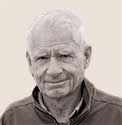 |
| Christiansen |
Structural engineer John V. “Jack” Christiansen, a leader in the design of thin-shell concrete structures, died on Aug. 16 on Bainbridge Island, Wash. He would have turned 90 on Sept. 28.
The most significant of Christiansen’s 75 thin shells was the segmental-concrete Seattle Kingdome, engineered by Seattle-based Skilling, Helle, Christiansen, Robertson (SHCR), with architect NBBJ. The 660-ft-dia roof of the multipurpose sports venue, which opened in 1976, ranked as the world’s largest concrete dome.
The Kingdome was razed in 2000, not because of any issue with its structure but to make way for an open-air stadium, says Jon D. Magnusson, former chairman and CEO and current senior principal of Magnusson Klemencic Associates (MKA), an SHCR successor firm.
Another notable thin-shell project was the Rivergate Exhibition Hall, in New Orleans, for architect Curtis and Davis. The building, with a collection of humpbacked barrel vaults spanning more than 253 ft, was razed in 1995—after a bitter preservation battle—to make way for a casino. With architect Minoru Yamasaki, Christiansen also designed Seattle’s Pacific Science Center, which still stands.
Jud Marquardt, a founding partner of Seattle-based LMN Architects, calls Christiansen, who had a bachelor’s degree in architectural engineering, an architect’s engineer. “He was exploratory,” always seeking to enhance the form, constructibility and economy, says Marquardt, who worked on the Kingdome when he was with NBBJ. “If you knew Jack Christiansen was going to be your structural engineer, you would engage him in design strategy meetings at the outset,” he adds.
Leslie Earl Robertson, of the eponymous structural engineer, was Christiansen’s partner at SHCR. “Jack was able to take his ideas for structure and make an architectural form that jolted your eyes,” says Robertson.
Magnusson adds, “Very few people have that wide view of both architecture and engineering. That view has become part of our culture.”
Christiansen graduated in 1949 from the University of Illinois, Champagne-Urbana. In 1950, he earned his master’s degree in structural engineering from Northwestern University.
In 1952, after working in Chicago for architects, he joined Seattle-based consulting engineer W.H. Witt, the firm that eventually became SHCR. Christiansen retired from SHCR at age 55.
“Quality, not quantity,” was Christiansen’s motto. “Even in today’s environment where many firms are merging into megafirms, Jack’s business philosophy survives at MKA,” says Magnusson.




Post a comment to this article
Report Abusive Comment